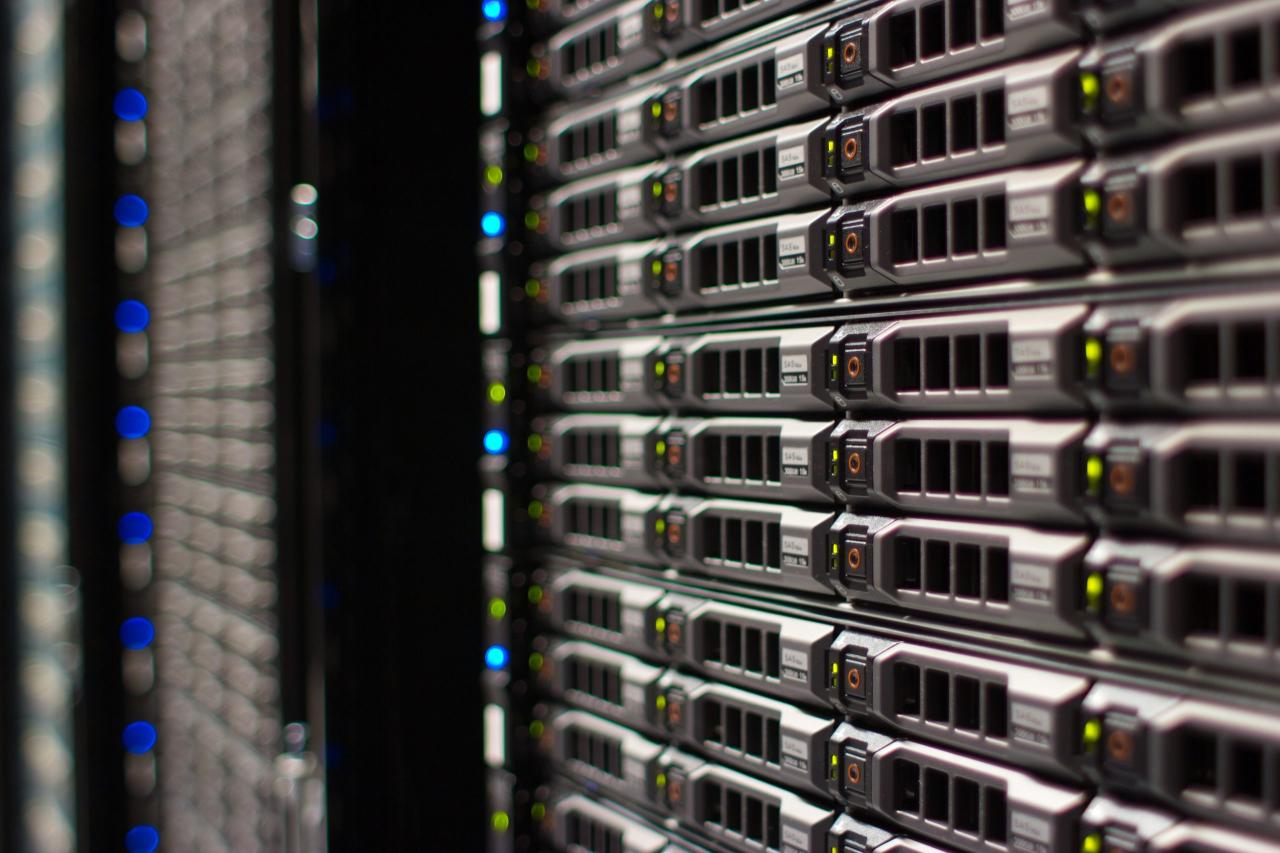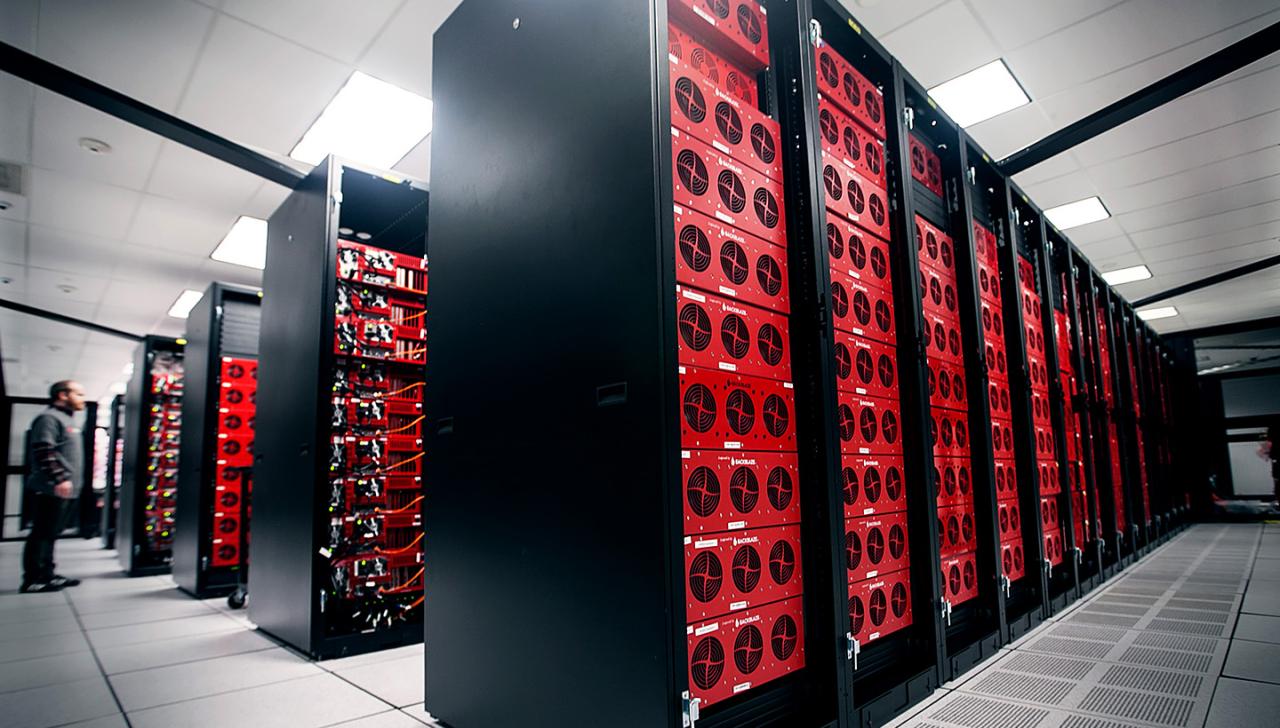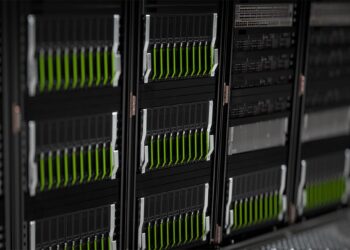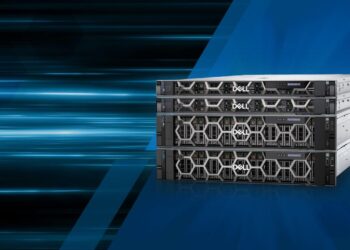In the digital era, data is not just an asset; it is the fundamental currency of innovation, business, and human connection. Every tweet, every transaction, every sensor reading, every streamed video, and every AI model contributes to an ever-expanding universe of digital information. This relentless proliferation of data has created an unprecedented demand for storage, leading to an explosive boom in storage server capacity. Far beyond mere hard drives, today’s storage servers are sophisticated, intelligent systems designed to capture, manage, protect, and make accessible petabytes and even exabytes of data, underpinning virtually every digital activity worldwide. The continuous expansion and technological advancement in this domain are critical for supporting the relentless growth of cloud computing, big data analytics, artificial intelligence, and the Internet of Things (IoT).
The Data Deluge

The scale of data generation is staggering and shows no signs of slowing down.
- Internet of Things (IoT): Billions of connected devices (sensors, smart appliances, industrial machinery) continuously generate streams of data.
- Artificial Intelligence (AI) and Machine Learning (ML): Training large AI models requires vast datasets, and the models themselves, once trained, also consume significant storage.
- Streaming Media: High-definition video, music, and gaming demand immense storage capacity and rapid access.
- Cloud Computing: Public and private clouds serve as massive repositories for data from countless applications and users.
- Big Data Analytics: Organizations collect and analyze vast datasets to derive business insights, requiring scalable storage for both raw and processed data.
- Regulatory Compliance: Increasingly stringent regulations (e.g., GDPR, HIPAA) mandate longer retention periods for various types of data, further driving storage demand.
This data deluge has pushed traditional storage solutions to their limits, necessitating a fundamental transformation in how storage servers are designed, deployed, and managed. The Storage Server Capacity Boom is a direct response to this challenge, characterized by innovations in hardware, software, and architectural approaches that prioritize density, performance, and efficiency at an unprecedented scale.
Drivers of the Storage Server Capacity Boom
The current expansion in storage server capacity is fueled by a confluence of technological advancements and evolving enterprise needs.
A. Flash Storage Dominance (SSDs and NVMe)
The transition from traditional spinning Hard Disk Drives (HDDs) to Solid State Drives (SSDs) and the adoption of NVMe (Non-Volatile Memory Express) have been pivotal.
- Speed and Performance: SSDs offer significantly higher read/write speeds (IOPS – Input/Output Operations Per Second) and much lower latency compared to HDDs. This is crucial for performance-sensitive applications, databases, and virtualization.
- NVMe Protocol: NVMe is a communication interface specifically designed for SSDs that connects directly to the PCIe bus, bypassing the older SATA/SAS protocols. This maximizes the performance of flash storage, enabling orders of magnitude improvement in throughput and latency.
- Density: While HDDs still offer lower cost per terabyte for bulk storage, SSDs are becoming increasingly dense, allowing more data to be packed into smaller form factors, particularly with technologies like QLC (Quad-Level Cell) NAND.
- Energy Efficiency: SSDs consume less power and generate less heat than HDDs, contributing to lower operational costs for data centers.
- Applications: Ideal for primary storage, databases, virtual desktop infrastructure (VDI), analytics, and AI/ML datasets where rapid access is critical.
- All-Flash Arrays (AFAs): Storage arrays built entirely with SSDs and optimized to leverage their performance characteristics, providing extreme speed and low latency.
B. Increased Hard Disk Drive (HDD) Capacity and Innovation
Despite the rise of flash, HDDs continue to be the workhorses for cost-effective, high-capacity bulk storage.
- Helium-Filled Drives (HelioSeal): Sealing HDDs with helium instead of air reduces internal drag, allowing for thinner platters and more platters per drive. This enables higher capacities (e.g., 20TB, 24TB, 30TB+ per drive) and improved power efficiency.
- Heat-Assisted Magnetic Recording (HAMR) and Microwave-Assisted Magnetic Recording (MAMR): These next-generation recording technologies use localized heat or microwave energy to make the platters more receptive to magnetic changes, allowing for significantly higher data density and pushing capacities beyond 30TB towards 50TB and beyond.
- Shingled Magnetic Recording (SMR): Overlapping data tracks (like shingles on a roof) to increase areal density, though with potential trade-offs in write performance for certain workloads.
- Applications: Ideal for archival storage, backup repositories, large object stores, data lakes, and warm data tiers where cost-per-terabyte is the primary concern.
C. Software-Defined Storage (SDS) and Hyper-Converged Infrastructure (HCI)
Software is increasingly orchestrating and managing storage, enabling greater flexibility and scalability.
- SDS: Decouples the storage hardware from the storage management software. This allows organizations to use commodity hardware while gaining advanced features like replication, deduplication, compression, and automated tiering through software. It provides greater agility and reduces reliance on proprietary hardware vendors.
- HCI: Integrates compute, storage, and networking into a single, highly virtualized appliance or cluster. Storage is managed by software running on the same servers that host the applications. HCI simplifies deployment, management, and scaling, making it a popular choice for private clouds and remote office/branch office (ROBO) environments.
- Scale-Out Architectures: Both SDS and HCI enable scale-out architectures, where capacity and performance can be expanded by simply adding more nodes to a cluster, rather than upgrading individual components. This offers horizontal scalability to meet massive data growth.
D. Object Storage Dominance
For unstructured data at massive scale, object storage has become the de facto standard.
- Scalability: Object storage systems (like Amazon S3, Azure Blob Storage, or on-premises solutions like Ceph or MinIO) are designed to store petabytes and exabytes of unstructured data (files, images, videos, backups) with virtually unlimited scalability.
- Durability and Availability: Data is replicated across multiple nodes and locations for high durability and availability, protecting against hardware failures.
- Cost-Effectiveness: Object storage is generally the most cost-effective solution for massive volumes of unstructured data.
- API Access: Data is accessed via RESTful APIs, making it easy to integrate with cloud-native applications and microservices.
- Applications: Data lakes, cloud backups, archival storage, content delivery, media repositories, and big data analytics.
E. Cloud Storage Adoption
The public cloud offers massive, on-demand storage capacity, influencing the growth of storage servers in hyperscale data centers.
- Scalability and Elasticity: Cloud storage services provide virtually infinite, on-demand scalability, eliminating the need for customers to purchase and manage physical storage infrastructure.
- Cost Models: Pay-as-you-go pricing models reduce upfront capital expenditure and allow costs to align with actual usage.
- Diverse Tiers: Cloud providers offer various storage tiers (hot, cool, archive, glacier) with different performance and cost characteristics, allowing for optimized data placement.
- Global Reach: Data can be stored and accessed globally, supporting distributed applications and disaster recovery.
- Impact on Server Capacity: While customers consume cloud storage as a service, it necessitates massive investments in physical storage servers by hyperscale cloud providers to underpin these offerings.
F. Emergence of Data Lakes and Lakehouses
The rise of big data analytics has driven the creation of massive data repositories.
- Data Lakes: Centralized repositories designed to store vast amounts of raw data in its native format from various sources (structured, semi-structured, unstructured). This requires immense, scalable, and often tiered storage.
- Data Lakehouses: Combining the best aspects of data lakes (flexibility, cost-effectiveness) with data warehouses (schema enforcement, ACID transactions), creating a unified platform for analytics and AI that demands sophisticated storage server architectures.
- Applications: Business intelligence, machine learning, real-time analytics, data science research.
Innovations Driving Greater Storage Server Capacity

Beyond the core technologies, continuous innovation in server design, software, and management are accelerating the capacity boom.
G. High-Density Storage Servers
Server manufacturers are designing chassis that can house an unprecedented number of drives.
- “Brick” or “Density” Servers: These servers are optimized to hold dozens (e.g., 60, 90, or even 100+) of HDDs or SSDs in a compact rack unit (e.g., 4U). This maximizes the storage capacity per rack, reducing data center footprint and improving efficiency.
- Front-Loading/Top-Loading Designs: Innovative chassis designs that allow for easier hot-swapping and maintenance of drives in dense configurations.
- Software-Defined Storage Integration: These high-density servers are often the building blocks for software-defined storage solutions, providing the underlying hardware for scale-out object or file storage.
H. Computational Storage and Data Processing Units (DPUs)
Moving processing closer to the data to alleviate bottlenecks.
- Computational Storage Drives (CSD): SSDs that embed processing capabilities directly on the drive. This allows for tasks like compression, encryption, or basic filtering to be performed directly at the storage level, reducing data movement to the CPU and improving efficiency for certain workloads.
- Data Processing Units (DPUs): Specialized processors (often from NVIDIA/Mellanox, Intel, Marvell) that offload and accelerate networking, storage, and security tasks from the main CPU. DPUs handle data movement, security, and storage functions, freeing up CPU cores on the main server for application processing and enhancing overall system performance and scalability.
- Advantages: Reduces CPU overhead, improves I/O performance, enhances security, and allows for more efficient utilization of compute resources.
I. Tiered Storage and Automated Data Lifecycle Management
Efficiently managing data across different storage tiers based on access patterns.
- Hot Data: Frequently accessed data stored on fastest (NVMe SSD) and most expensive storage.
- Warm Data: Less frequently accessed data stored on high-capacity, lower-cost SSDs or performance HDDs.
- Cold Data/Archive: Rarely accessed or archival data stored on high-capacity, low-cost HDDs, tape libraries, or deep archive cloud storage.
- Automated Tiering: Software automatically moves data between tiers based on predefined policies or AI-driven analytics of access patterns, optimizing both performance and cost.
- Data Lifecycle Management (DLM): Comprehensive strategies and tools to manage data from creation to archival/deletion, ensuring compliance, optimizing storage costs, and maintaining data integrity throughout its lifecycle.
J. Hyperscale Architectures and Custom Designs
The largest cloud providers are at the forefront of driving massive storage capacity.
- Custom Server Designs: Hyperscale cloud providers (Google, Amazon, Microsoft) often design their own custom storage servers optimized for their specific software stacks and operational models, pushing the boundaries of density and efficiency.
- Distributed File Systems: Leveraging highly scalable distributed file systems (e.g., HDFS, Ceph, Google File System) built on vast clusters of commodity storage servers to manage petabytes and exabytes of data.
- Software-Hardware Co-Design: Tight integration between custom hardware designs and specialized software to achieve unprecedented levels of performance, efficiency, and scale.
Challenges and Considerations in the Storage Capacity Boom
While the growth in storage capacity is impressive, it comes with its own set of challenges.
K. Cost Per Terabyte vs. Performance
- Balancing Act: Organizations constantly balance the need for high-performance (more expensive) storage with the need for massive, cost-effective (less expensive) bulk storage.
- Tiering Complexity: While beneficial, implementing and managing sophisticated tiered storage solutions can be complex.
L. Data Security and Governance
- Massive Attack Surface: More data means a larger target for cybercriminals. Securing petabytes of data across distributed storage servers is a monumental task.
- Ransomware Protection: Protecting against ransomware attacks that encrypt or destroy data stored on servers requires robust backup, immutability, and rapid recovery strategies.
- Data Privacy and Compliance: Managing sensitive data across vast storage systems while adhering to global privacy regulations (GDPR, CCPA) and industry-specific compliance requirements is increasingly complex.
- Access Control: Implementing granular access controls to ensure only authorized users and applications can access specific data.
M. Data Management and Organization
- Data Silos: Despite centralized storage, data can still become fragmented and trapped in different systems, making it difficult to gain a holistic view.
- Data Quality and Governance: Ensuring the quality, accuracy, and governance of vast datasets is a continuous challenge.
- Discovery and Indexing: Efficiently discovering and indexing relevant data within petabytes of information requires sophisticated tools.
N. Energy Consumption and Cooling
- Growing Power Demands: Even with efficiency gains, powering and cooling massive numbers of storage servers consumes significant energy, contributing to operational costs and environmental impact.
- Thermal Management: Densely packed storage servers generate considerable heat, requiring robust cooling solutions in data centers.
O. Data Durability and Resilience
- Failure Domains: While individual drive failures are common, ensuring data durability across large clusters requires sophisticated RAID configurations, replication schemes, and erasure coding.
- Disaster Recovery (DR): Implementing robust disaster recovery strategies for petabytes of data, including replication to geographically distant locations, is complex and costly.
P. E-Waste and Sustainability
- Hardware Refresh Cycles: The continuous drive for greater capacity and performance leads to relatively frequent hardware refresh cycles, generating significant electronic waste.
- Responsible Recycling: Ensuring that old storage hardware is responsibly recycled to minimize environmental harm and recover valuable materials.
The Future of Storage Server Capacity
The storage server capacity boom is far from over. Future innovations will continue to push boundaries.
Q. Next-Generation Storage Media
- New Recording Technologies: Continued advancements in HAMR and MAMR will push HDD capacities well beyond current limits.
- Post-NAND Memory: Research into new memory technologies beyond NAND flash (e.g., MRAM, ReRAM, FeRAM) that could offer even higher density, lower power, and greater endurance.
- DNA Storage: A futuristic concept where data is encoded in synthetic DNA, offering extremely high density and long-term stability, though still in the early research phase.
R. AI-Driven Storage Management
- Predictive Analytics: AI will play an increasing role in predicting storage needs, identifying potential bottlenecks, and optimizing data placement across tiers.
- Automated Performance Tuning: AI will autonomously tune storage parameters for optimal performance based on real-time workload analysis.
- Smart Data Placement: AI will intelligently decide where data should reside (hot, warm, cold) based on access patterns, regulatory compliance, and cost objectives.
S. Edge Storage Expansion
- Edge Data Lakes: As edge computing grows, more data will be stored and processed locally, leading to a boom in purpose-built, ruggedized storage servers at the edge for real-time analytics.
- Distributed Ledger Technology (DLT): Blockchain and other DLTs could have implications for distributed, tamper-proof storage of certain types of data.
T. Enhanced Security Integration
- Hardware-Rooted Security: More storage servers will integrate hardware-level security features for data encryption and integrity validation.
- Zero Trust for Storage: Applying Zero Trust principles to storage access, where every access request is authenticated and authorized regardless of location.
- Built-in Ransomware Protection: Storage systems will incorporate more advanced, built-in features to detect, prevent, and rapidly recover from ransomware attacks.
U. Global Data Fabric and Interoperability
- Seamless Data Movement: The development of a global “data fabric” that allows for seamless, secure, and efficient movement of data between on-premises storage, edge locations, and multiple clouds.
- Open Standards: Greater adoption of open standards for storage APIs and protocols to improve interoperability and reduce vendor lock-in.
Conclusion
The server hardware supply chain is a testament to global connectivity and technological complexity. It is a critical, yet often vulnerable, system that underpins our entire digital civilization. The recent past has exposed its fragilities, from chip shortages and geopolitical tensions to logistics disruptions and cybersecurity threats.
However, these challenges are driving a crucial evolution. By embracing diversification, enhancing transparency, exploring regionalization, leveraging advanced analytics, strengthening cybersecurity defenses, and committing to sustainability, the industry is building a more resilient, adaptable, and responsible supply chain. The future of server hardware relies on this collective effort—a continuous process of innovation and strategic planning—to ensure that the digital backbone of our world remains robust, reliable, and capable of meeting the ever-growing demands of tomorrow’s technological landscape. Securing the server hardware supply chain is not just an operational necessity; it’s a strategic imperative for global digital stability and progress.










